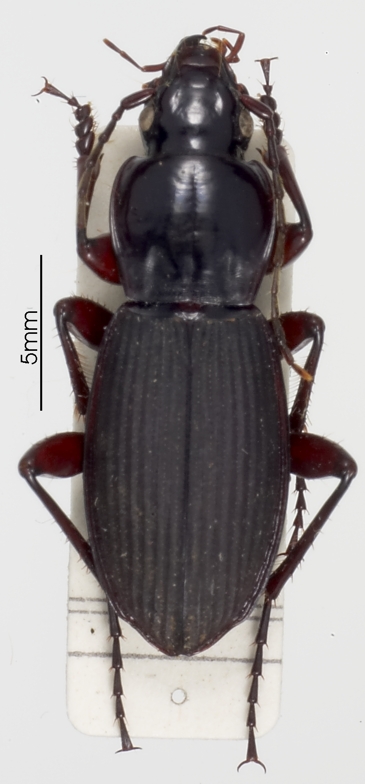|
Notonomus Wentworthi
''Notonomus wentworthi'' is a species of ground beetle in the subfamily Pterostichinae. It was described by Thomas Sloane in 1913. References Notonomus Beetles described in 1913 Taxa named by Thomas Gibson Sloane {{Notonomus-stub ... [...More Info...] [...Related Items...] OR: [Wikipedia] [Google] [Baidu] |
Ground Beetle
Ground beetles are a large, cosmopolitan distribution, cosmopolitan family (biology), family of beetles, the Carabidae, with more than 40,000 species worldwide, around 2,000 of which are found in North America and 2,700 in Europe. As of 2015, it is one of the 10 most species-rich animal families. They belong to the Adephaga. Members of the family are primarily carnivorous, but some members are phytophagous or omnivorous. Description and ecology Although their body shapes and coloring vary somewhat, most are shiny black or metallic and have ridged wing covers (elytra). The elytra are fused in some species, particularly the large Carabinae, rendering the beetles unable to fly. The species ''Mormolyce phyllodes'' is known as violin beetle due to their peculiarly shaped elytra. All carabids except the quite primitive flanged bombardier beetles (Paussinae) have a groove on their arthropod leg, fore leg tibiae bearing a comb of hairs used for cleaning their antenna (biology), antennae. ... [...More Info...] [...Related Items...] OR: [Wikipedia] [Google] [Baidu] |
Pterostichinae
Pterostichinae is a subfamily of ground beetles (family Carabidae). It belongs to the advanced harpaline assemblage, and if these are circumscribed ''sensu lato'' as a single subfamily, Pterostichinae are downranked to a tribe Pterostichini. However, as the former Pterostichitae supertribe of the Harpalinae as loosely circumscribed does seem to constitute a lineage rather distinct from '' Harpalus'', its core group is here considered to be the present subfamily and the Harpalinae are defined more narrowly. They are usually mid-sized and rather stout ground beetles. Coloration is typically dark and without conspicuous patterns, but often with a strong sheen like polished metal. They are widely distributed and inhabit a wide range of terrestrial habitats. Unlike the more basal ground beetles which only eat small animals, the Pterostichinae include a large proportion of omnivorous or even herbivorous taxa. Systematics This group includes the following tribes and genera: Tribe A ... [...More Info...] [...Related Items...] OR: [Wikipedia] [Google] [Baidu] |
Thomas Sloane
Thomas Gibson Sloane (20 April 185820 October 1932) was an Australian sheep grazier and entomologist, considered to be one of the pioneers in Australia's entomology field. Early life Sloane was born 20 April 1858 in St Kilda, Melbourne, Victoria, Australia, the second son of merchant and sheep expert Alexander Sloane and homemaker Annabella Helen (née Gibson). He studied for some time at Melbourne's Scotch College. Career and personal life From 1888, Sloane served as manager of his father's sheep station, A. Sloane and Sons, in Moorilla, near Young, and later on in 1910 as owner. His sheep earned him recognition at many sheep shows. As an entomologist, Sloane described more than 600 new insect species. His expertise were the ground and tiger beetles. He later became a global authority on ground beetles. "An enthusiastic Darwinian", Sloane wed Eliza Scholastica Woolfrey on 28 October 1891, at the Church of England, Dubbo. They had six children – four were daughters a ... [...More Info...] [...Related Items...] OR: [Wikipedia] [Google] [Baidu] |
Notonomus
''Notonomus'' is a genus of ground beetles in the family Carabidae. There are more than 120 described species in ''Notonomus'', found in Australia. Species These 127 species belong to the genus ''Notonomus'': ; Subgenus Acanthoferonia B.Moore, 1965 : '' Notonomus ferox'' (B.Moore, 1965) ; Subgenus Conchitella B.Moore, 1962 : '' Notonomus clivinoides'' (B.Moore, 1962) ; Subgenus Leiradira Laporte, 1867 : '' Notonomus alternans'' (Darlington, 1953) : '' Notonomus alticola'' (Darlington, 1961) : '' Notonomus auricollis'' (Laporte, 1867) : '' Notonomus aurifer'' (Darlington, 1961) : '' Notonomus barrae'' Will, 2015 : '' Notonomus dimorphicus'' Darlington, 1961 : '' Notonomus flos'' Darlington, 1961 : '' Notonomus iridescens'' Will, 2015 : '' Notonomus jacobi'' (Darlington, 1961) : '' Notonomus latreillei'' (Laporte, 1867) : '' Notonomus opacistriatis'' Sloane, 1902 : '' Notonomus puella'' (Tschitscherine, 1898) : '' Notonomus smilodon'' Will, 2015 : '' Notonomus soror'' (Darling ... [...More Info...] [...Related Items...] OR: [Wikipedia] [Google] [Baidu] |
Beetles Described In 1913
Beetles are insects that form the order Coleoptera (), in the superorder Endopterygota. Their front pair of wings are hardened into wing-cases, elytra, distinguishing them from most other insects. The Coleoptera, with about 400,000 described species, is the largest of all orders, constituting almost 40% of described insects and 25% of all known animal life-forms; new species are discovered frequently, with estimates suggesting that there are between 0.9 and 2.1 million total species. Found in almost every habitat except the sea and the polar regions, they interact with their ecosystems in several ways: beetles often feed on plants and fungi, break down animal and plant debris, and eat other invertebrates. Some species are serious agricultural pests, such as the Colorado potato beetle, while others such as Coccinellidae (ladybirds or ladybugs) eat aphids, scale insects, thrips, and other plant-sucking insects that damage crops. Beetles typically have a particularly hard exoske ... [...More Info...] [...Related Items...] OR: [Wikipedia] [Google] [Baidu] |


